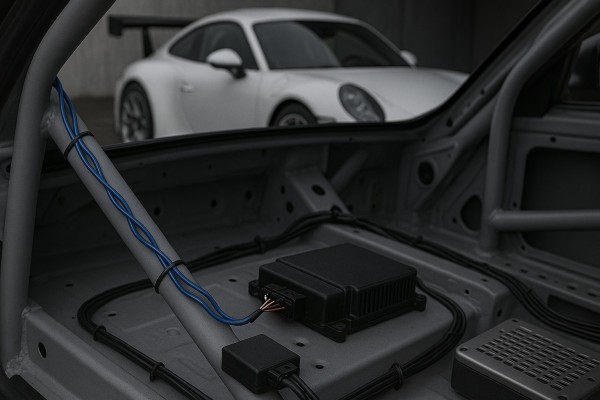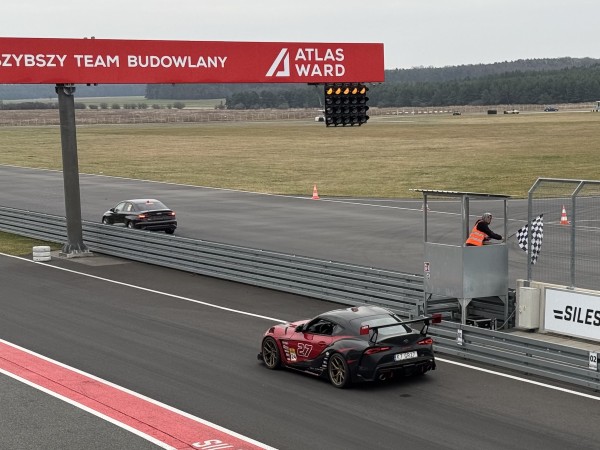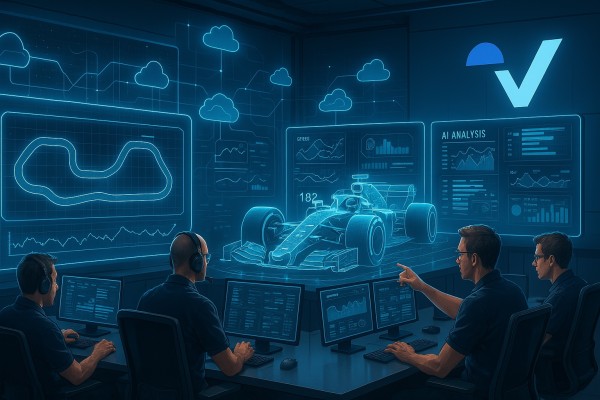Racing telemetry
How Advanced Sensors Are Revolutionizing Track Racing and Lap Times
by Paweł Sobociński |
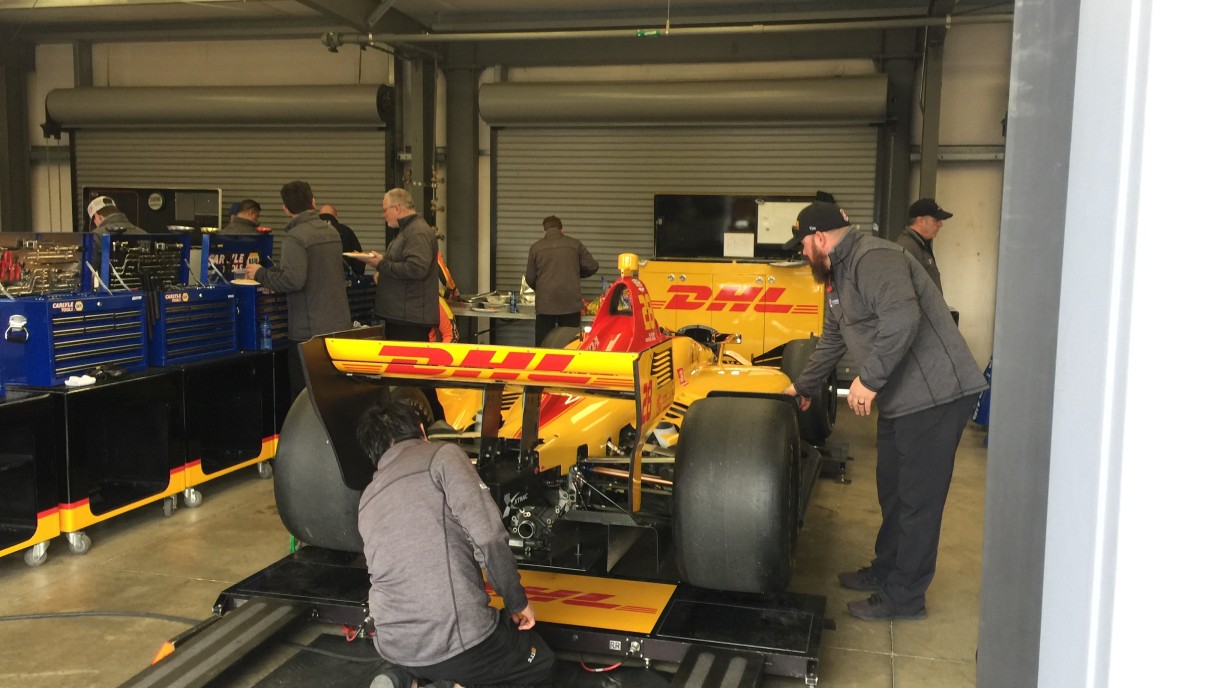
In motorsports, precision and performance are paramount. In the fast-paced world of track racing, understanding and improving lap times can make the difference between winning and losing. This is where advanced sensors and racing lap timers play a critical role. Over the years, lap timers have evolved from simple time-tracking devices into sophisticated tools that provide invaluable data on a racer’s performance. This article explores how these technologies are transforming racing strategies and lap time analysis, with a particular focus on racing telemetry, telemetry overlay, and the ability to obtain telemetric data for detailed racing analysis.
The Role of Racing Lap Timers in Modern Track Racing
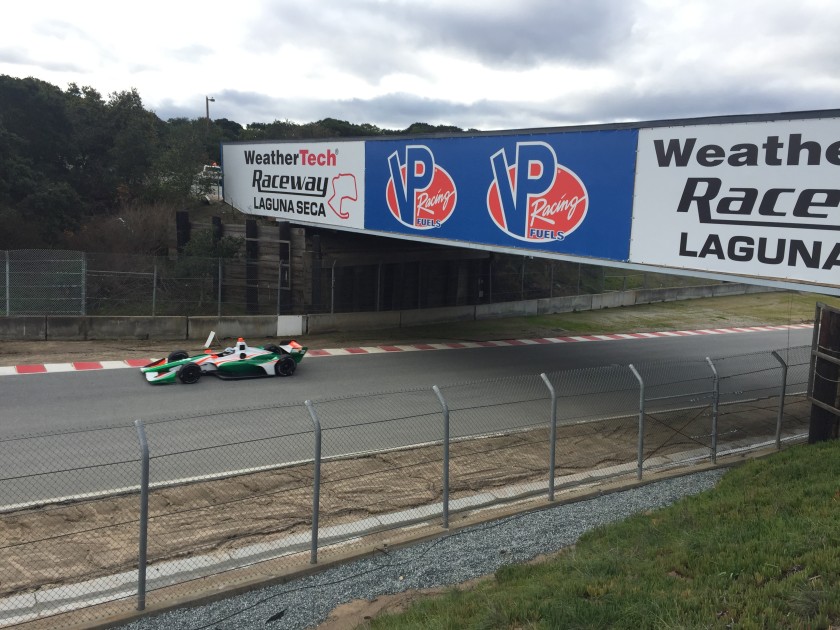
At its core, a racing lap timer measures the time it takes a vehicle to complete a circuit. However, today's lap timers do far more than just that. With the help of advanced sensors, these devices can track a wide range of performance metrics, including speed, acceleration, braking points, and even tire wear. As technology advances, lap timers have become integral tools for both amateur and professional racers aiming to optimize their performance.
For instance, modern lap timers like Vetkuro are equipped with advanced telemetry capabilities, offering real-time feedback that is essential for improving a racer’s strategy. The Vetkuro Lap Timer integrates telemetry data into its system, allowing racers to obtain telemetric data on various aspects of their vehicle’s performance, such as engine temperature, tire pressure, and even suspension dynamics. This detailed data helps drivers and their teams make informed decisions to fine-tune their setups and techniques.
A recent guide on lap timers explains in detail how these devices have evolved, highlighting Vetkuro as one of the most advanced solutions currently available. It provides key insights into how racing lap timers have become essential for tracking and improving performance, emphasizing the importance of features like telemetry data, predictive timing, and cloud-based data storage. The Importance of Telemetry in Track Racing
The Importance of Telemetry in Track Racing
Telemetry, a technology that involves the collection and transmission of performance data from sensors on a vehicle, is revolutionizing the world of track racing. By using telemetry overlay, teams can receive real-time updates on a variety of performance metrics, enabling them to adjust their strategy during races.
Telemetry data collected through racing lap timers can include crucial information such as vehicle speed, engine RPM, braking force, and cornering G-forces. For example, if a racer is losing time in certain corners, telemetry data can pinpoint where improvements can be made, such as braking earlier or adjusting steering input. This allows teams to obtain telemetric data that highlights areas for improvement, ensuring that every lap is faster than the last.
In addition, telemetry enables racing analysis that goes beyond the lap time itself. With access to detailed data on how a car performs throughout the circuit, engineers and racers can collaborate to refine vehicle setups and driving techniques. For instance, a team might adjust the car's suspension based on telemetry data indicating that the car is understeering in certain turns, leading to faster lap times and a more controlled ride.
How Technology Is Enhancing Racing Strategies

The introduction of advanced sensors and racing telemetry has drastically changed the way teams approach track racing. It’s no longer enough to simply drive faster; racers must also understand the intricate details of how their vehicle behaves on the track. By collecting and analyzing telemetric data, drivers can pinpoint exactly where improvements need to be made - whether it’s adjusting the car’s aerodynamics, fine-tuning suspension settings, or modifying driving behavior.
Predictive timing is another feature that has become a game-changer in racing. This feature allows racers to compare their current lap times to their personal bests or ideal lap times, helping them gauge whether they need to push harder or adjust their approach to achieve the fastest lap. Racing lap timers like Vetkuro make use of this feature to provide immediate feedback during qualifying and race sessions.
One prominent example of predictive timing in action is Vetkuro, a racing lap timer that offers advanced telemetry data integration and cloud-based storage for easy access to race performance analysis. Through real-time data overlays, racers can view how their current lap compares to previous ones, adjusting their tactics to secure better lap times.
Conclusion
As advanced sensors and racing telemetry continue to evolve, their impact on track racing becomes ever more profound. The ability to track lap times with precision and analyze data in real-time allows racers to continuously refine their skills and improve their performance. Whether through racing lap timers or telemetry overlays, technology has revolutionized the way drivers approach racing.
For those interested in mastering the art of racing, understanding and leveraging telemetric data is crucial. Tools like Vetkuro are at the forefront of this revolution, enabling racers to gather, analyze, and act on the data that will ultimately determine their success on the track.

